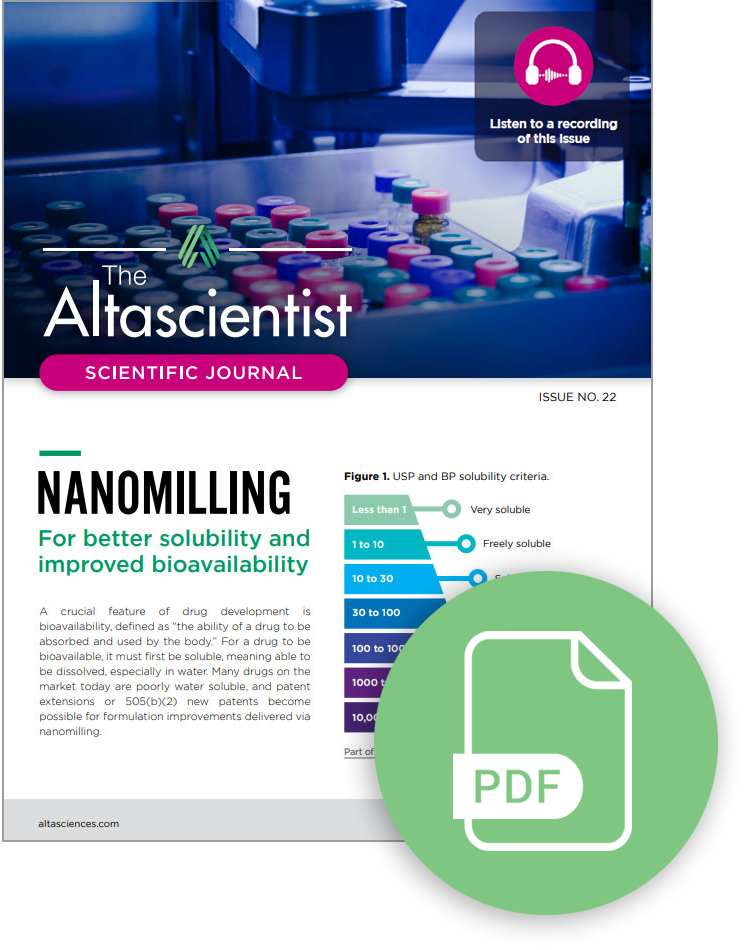ISSUE NO. 22 — Nanomilling for Better Solubility and Improved Bioavailability

A crucial feature of drug development is bioavailability, defined as “the ability of a drug to be absorbed and used by the body.” For a drug to be bioavailable, it must first be soluble, meaning able to be dissolved, especially in water. Many drugs on the market today are poorly water soluble, and patent extensions or 505(b)(2) new patents become possible for formulation improvements delivered via nanomilling.
In Issue 22 of The Altascientist, we review:
- solubility classifications
- overcoming solubility challenges
- the benefits of nanomilling
- how nanomilling works
- maximizing formulation
Case study included!
Overcoming Solubility Challenges With Nanomilling
Promising therapeutic molecules, even if classified as poorly soluble, can be developed successfully. There are multiple technologies available to increase the solubility and oral bioavailability of poorly soluble molecules being developed as active pharmaceutical ingredients (APIs) by reducing their particle size.
Nanomilling is a universal technique that can be applied to almost any API with water solubility below 200 μg/mL. It is a very adaptable drug delivery platform suitable for oral, injectable, inhalable, and buccal applications, for which fine drug particulates are especially desired in formulations.
Nanomilling is a unit operation where mechanical energy is applied to physically break down coarse particles to finer ones. It has wide commercial and industrial applications, as every drug can be ground to finer particles, whether aqueous or non-aqueous soluble. Decreasing the size of the API molecule increases the size of the specific surface area; the larger surface area allows for greater contact with water, increasing the API’s dissolution rate and bioavailability.
The Benefits of Nanomilling
Benefits of particle size reduction for the parenteral route include small dose volumes (resulting from high drug loading) and avoidance of harsh solvents and/or extreme pH conditions. Advantages for the pulmonary route include the ability to use inhalers intended for solutions, as well as the ability to produce spray-dried powders whose particle sizes are optimized for deep lung delivery.
Other advantages include reduced fed/fasted variability in both liquid and solid dosage forms, faster onset of therapeutic action, low excipient side effects, and the ability to run continuously.
How Altasciences Can Help Improve Your Drug’s Bioavailability With Nanomilling
Nanomilling is a highly complex process requiring a unique level of CDMO expertise that can only be gained through extensive experience with developing a broad range of APIs.
At Altasciences, we can take your API from formulation to commercialization. We have the necessary procedures, equipment, and experience to work with any formulation. Our highly skilled teams work with the latest equipment, including the NETZSCH DeltaVita® 15-300 mill, that with our wet milling options can reduce particles to nanometer size, fill vials in a range of sizes (from 0.3 ml to 500 ml), and package them.
Explore all issues of The Altascientist in our Resource Center. And don’t forget to subscribe to “The Altascientist: Audiobooks” on Spotify, Apple Podcasts, or wherever you get your audio content.
Download publication